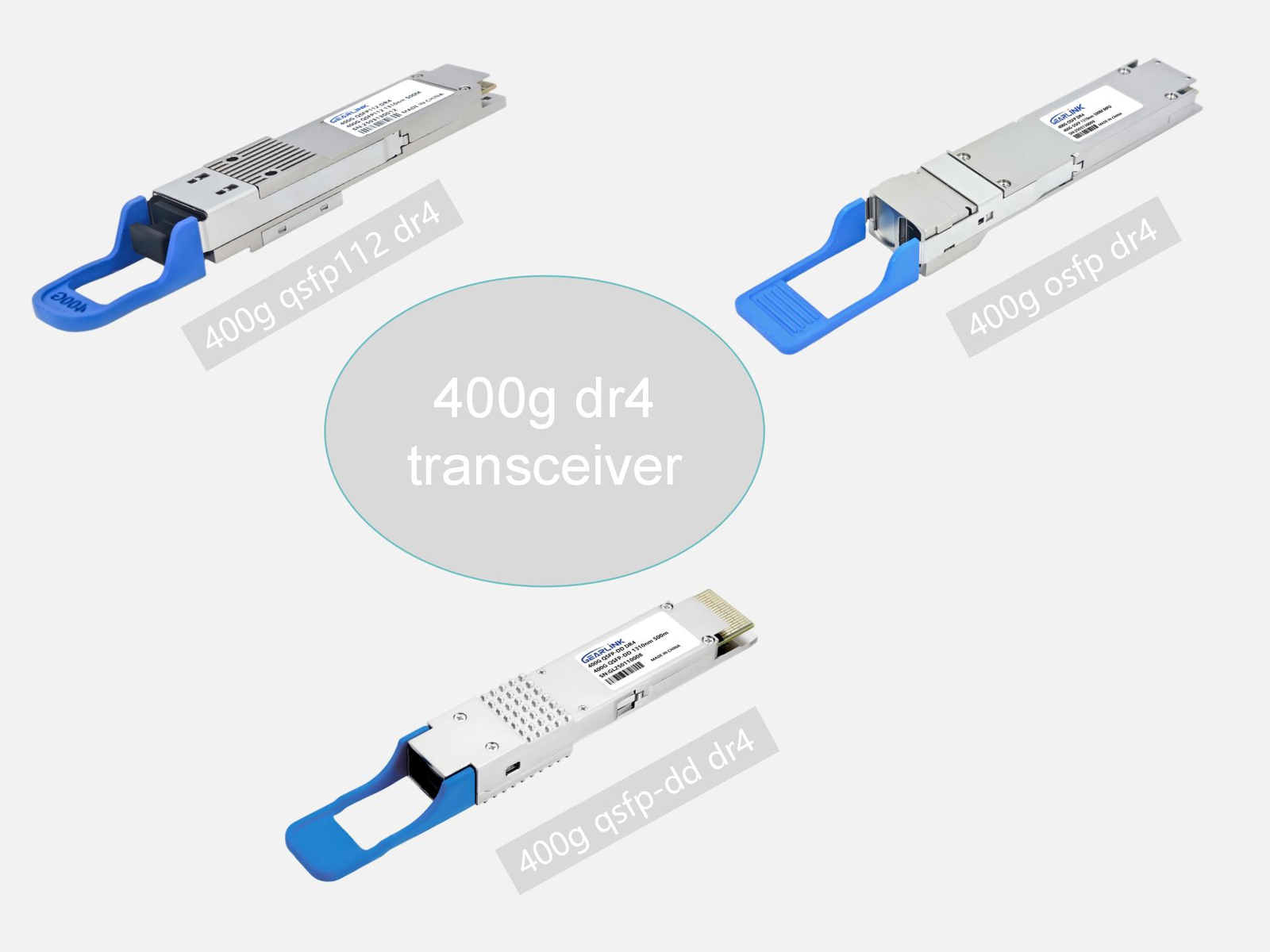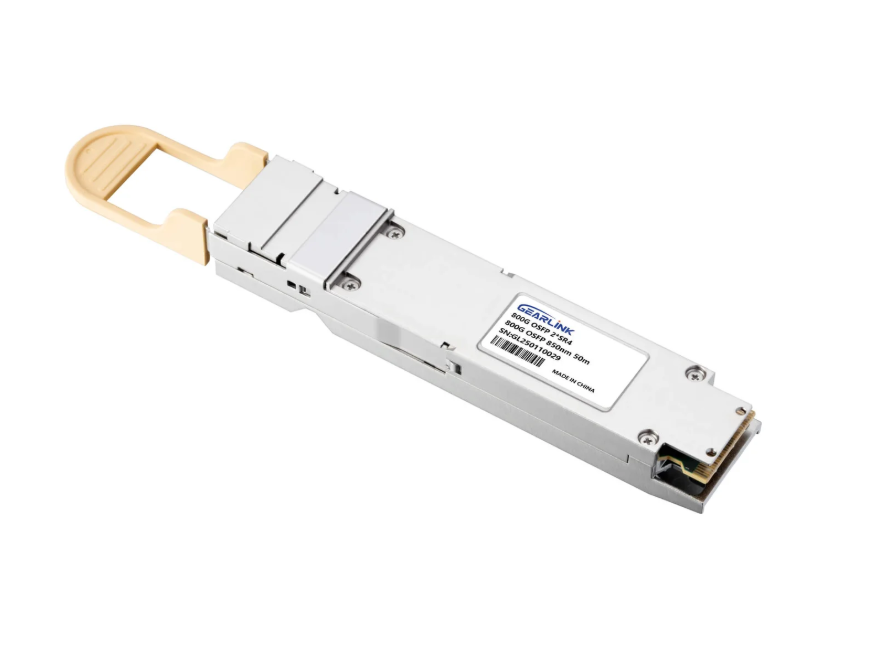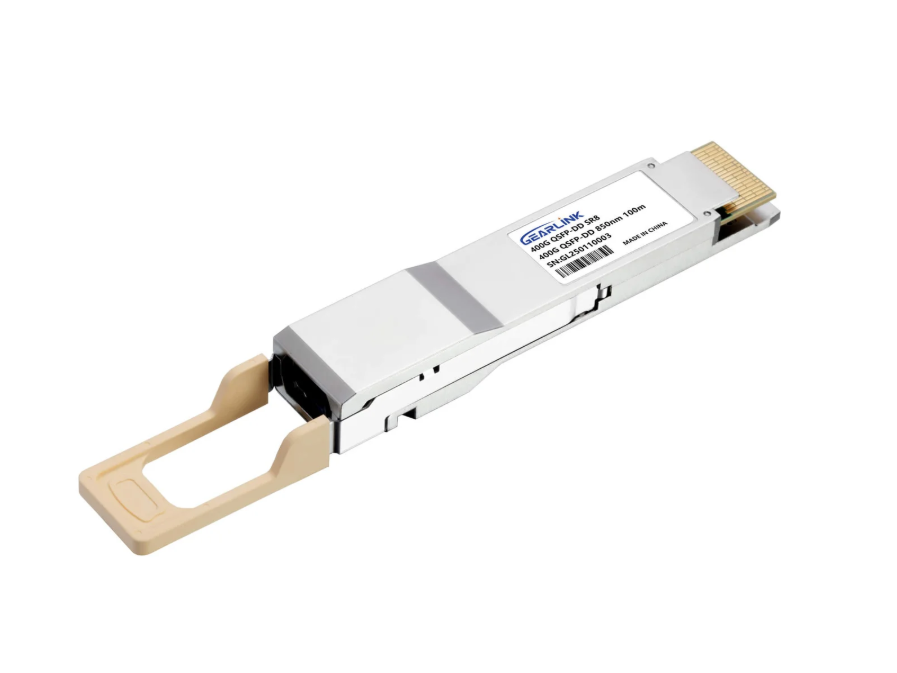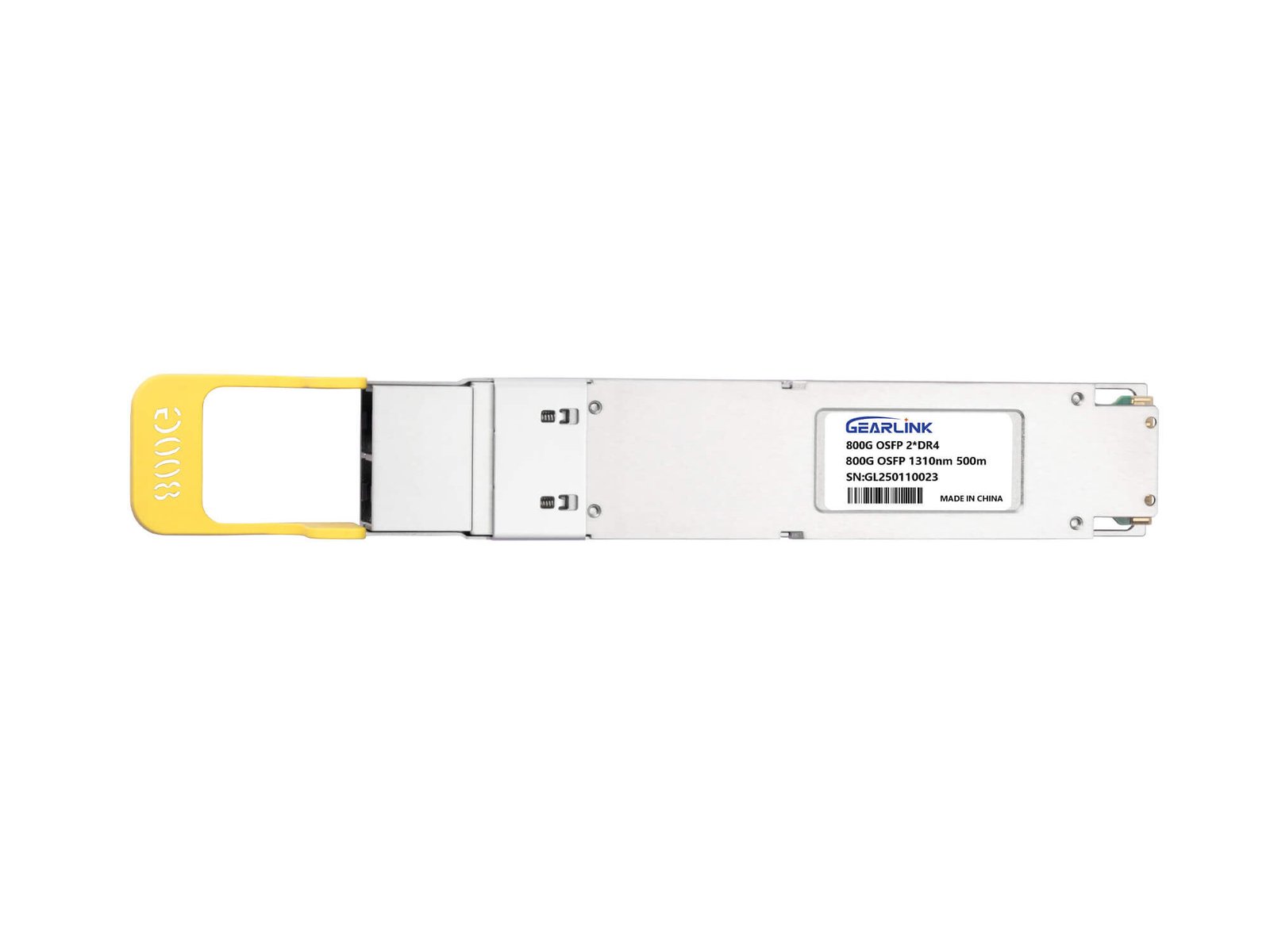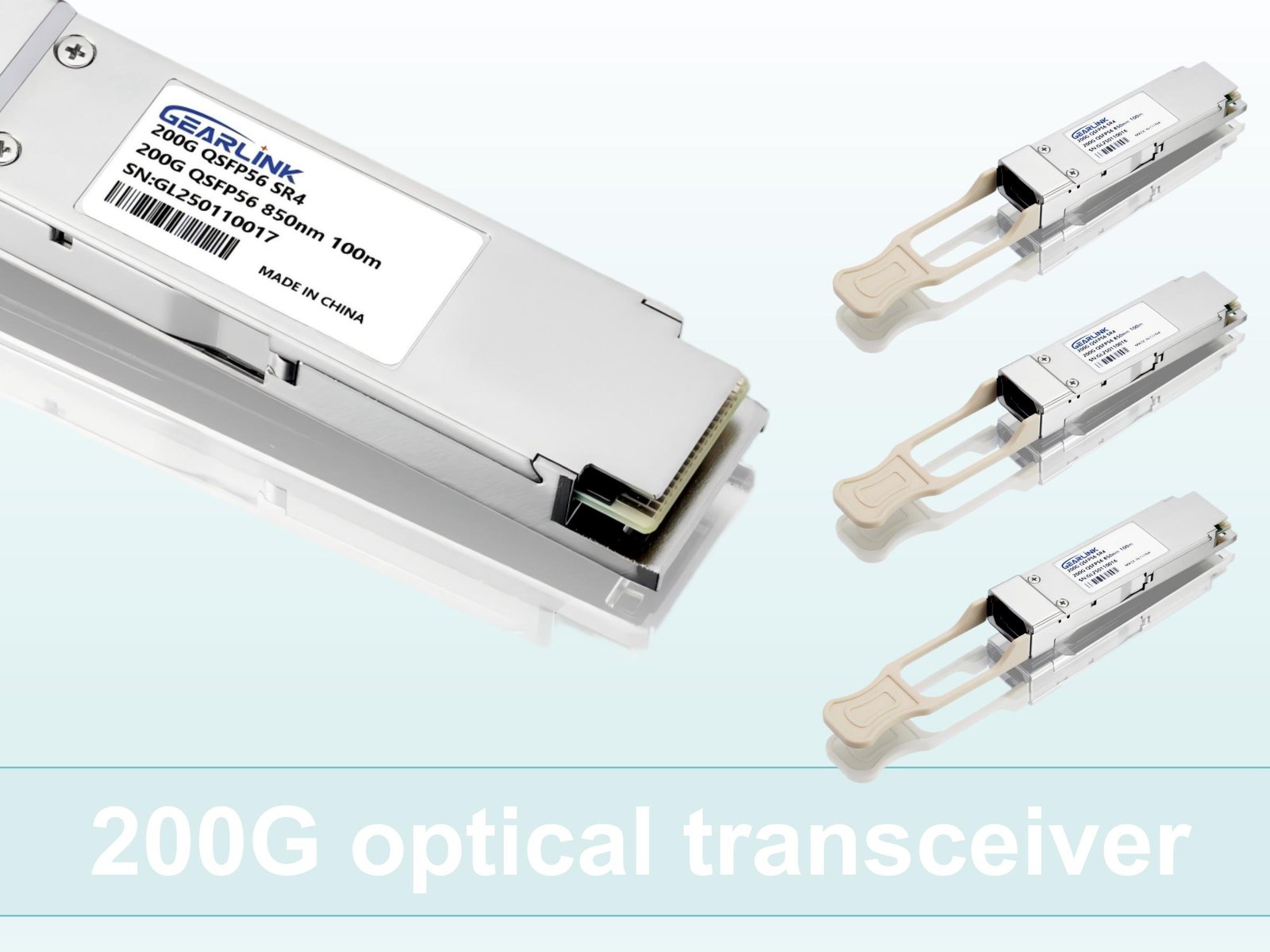With the explosive growth of artificial intelligence (AI) model training, distributed cloud services, and high-performance computing (HPC), global data centers are rapidly transitioning from 400G to 800G optical interconnects. Among the emerging solutions, the 800G OSFP DR8 transceiver has been recognized as a critical enabler for ultra-high-speed connectivity, offering standardized packaging, superior bandwidth, low power consumption, and enhanced reliability.
It should be emphasized that the 800G OSFP DR8 transceiver and the 800G QSFP-DD DR8 transceiver deliver nearly identical transmission performance, with their key distinction lying in the form factor:
QSFP-DD provides better backward compatibility, making it suitable for gradual upgrades in traditional rack-based networking devices.
OSFP, with a slightly larger form factor and stronger thermal design, is better positioned to support higher-power, next-generation networking.
As a result, the 800G OSFP DR8 transceiver not only serves as the backbone of internal data center interconnects but also establishes a critical transition path toward future 1.6T and even 3.2T modules.
Technology Evolution Background
Driven by the rise of AI computing power, data exchange between GPU clusters has been increasing exponentially. Traditional 400G networks have become bottlenecks, incapable of sustaining real-time training of models with billions or even trillions of parameters. Meanwhile, the convergence of public and private cloud infrastructures has further raised requirements for bandwidth density, energy efficiency, and scalability.
In this context, the 800G OSFP DR8 transceiver has been introduced with several key innovations:
8×100G parallel channels enabling an aggregated 800Gbps line rate.
PAM4 modulation, which doubles channel efficiency compared with NRZ.
16W low power design, though still requiring further optimization in energy-sensitive deployments.
Standardized OSFP package, delivering stronger heat dissipation and higher power density.
It can therefore be considered an inevitable choice for next-generation AI networking infrastructure.
Core Specifications: The New Benchmark in 800G Performance
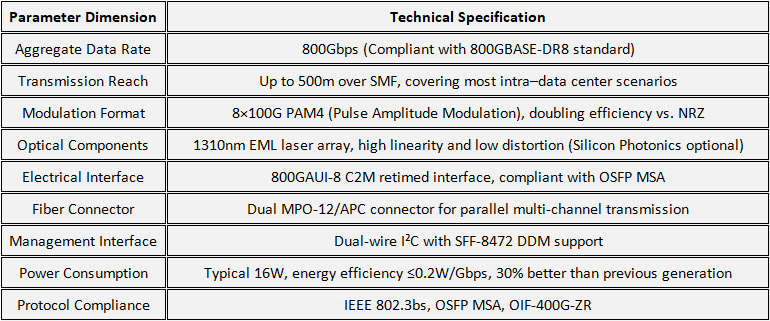
Technical Advantages of the 800G OSFP DR8 Transceiver
Architecture-Level Bandwidth Upgrade
The 800G OSFP DR8 transceiver adopts an 8×100G parallel channel architecture, significantly boosting uplink bandwidth in leaf-spine topologies. This effectively removes communication bottlenecks between GPU clusters and enables real-time data synchronization for large-scale AI training.
Balanced Cost and Distance
With a reach of up to 500 meters, the 800G OSFP DR8 transceiver covers more than 90% of data center interconnect scenarios without requiring additional repeaters or amplifiers. Compared with long-haul solutions, it reduces network TCO while delivering sufficient bandwidth density.
Exceptional Power Efficiency
The typical 16W power consumption achieves ≤0.2W/Gbps, representing a 30% efficiency improvement over 400G solutions. When combined with advanced liquid-cooling technologies, racks can support over 50kW power density, making the 800G OSFP DR8 transceiver suitable for high-density AI cluster deployments.
High Reliability and Long Service Life
By adopting an EML laser + APD receiver design, the 800G OSFP DR8 transceiver maintains a BER below 1e-5 over 500m transmission. GR-468 reliability testing has confirmed MTBF over 500,000 hours, ensuring stable operation in mission-critical applications.
Application Scenarios of the 800G OSFP DR8 Transceiver
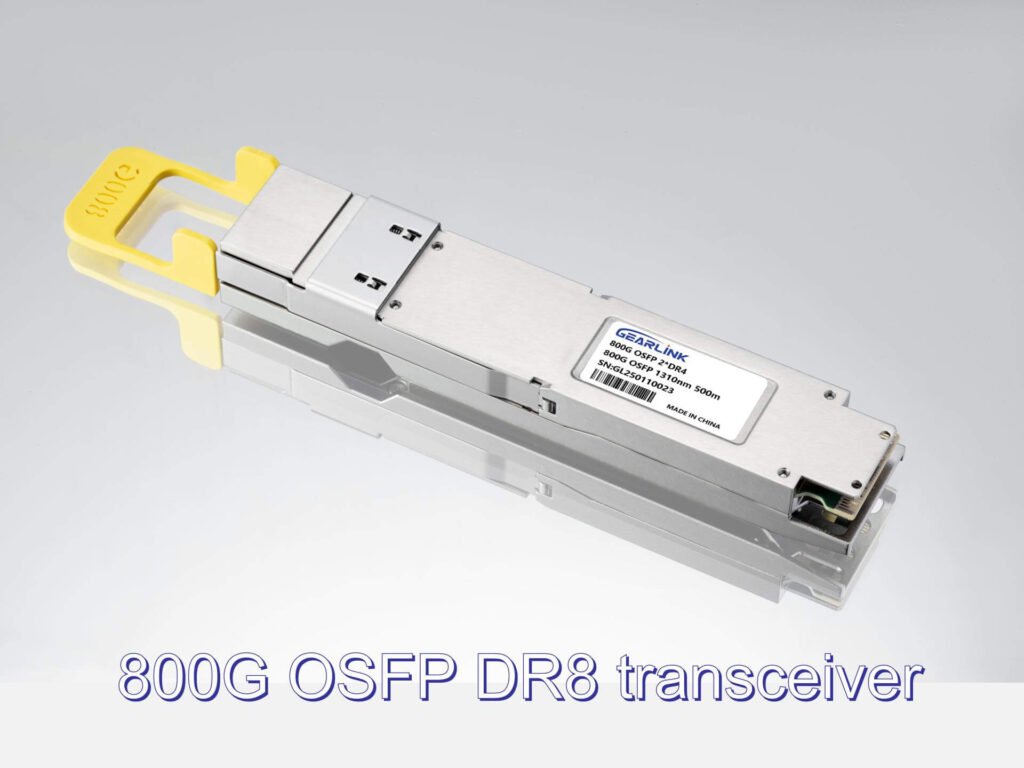
AI Cluster Interconnection
As an upgrade from InfiniBand NDR 200G networks, the 800G OSFP DR8 transceiver supports RDMA-based GPU interconnects with microsecond-level latency, ensuring lossless, high-speed communication.
Leaf-Spine Network Upgrades
In data center leaf-spine architectures, the 800G OSFP DR8 transceiver replaces traditional 400G links, doubling uplink capacity, reducing device layers, and simplifying cabling.
Cloud Data Center Core Networking
In public cloud DCI environments, the 800G OSFP DR8 transceiver delivers dense 800G ports for VPC core routers, enabling large-scale VM migration and real-time orchestration.
Industry Trends and Ecosystem Evolution
Silicon Photonics and Co-Packaged Optics (CPO): With the rise of SiPh integration and CPO, the OSFP form factor, with stronger thermal handling, is considered an important transitional form before fully integrated optics.
Complementary to QSFP-DD: While QSFP-DD remains ideal for backward-compatible rack systems, the 800G OSFP DR8 transceiver is more suited for AI/HPC data centers demanding higher power budgets.
Ecosystem Compatibility: Fully compliant with OSFP MSA standards, the 800G OSFP DR8 transceiver integrates seamlessly with OSFP-based switches and routers.
Path to 1.6T and Beyond: Its design enables future evolution toward 1.6T and 3.2T optical modules, accelerating the shift from pluggable optics to CPO.
Conclusion
The 800G OSFP DR8 transceiver redefines the limits of hyperscale data center networking by combining ultra-high bandwidth, optimized power efficiency, superior thermal design, and unmatched reliability. It not only represents a foundational upgrade for today’s AI-driven infrastructures but also paves the way for future 1.6T and 3.2T optical interconnects.
In the era of AI 2.0, only with forward-looking designs such as the 800G OSFP DR8 transceiver can data centers sustain the exponential growth of computing power while building a more efficient, scalable, and resilient optical networking architecture. Should you find any errors, you are welcome to reach out to us for discussion.

